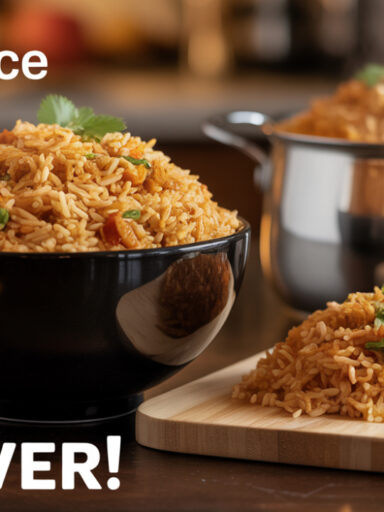Gajar Ka Halwa, also known as Indian Carrot Halwa, is a traditional Indian dessert loved for its rich taste, vibrant color, and comforting texture. Made using fresh carrots, sugar, cardamom, and cashews, this halwa recipe is a must-try during winter and festive seasons like Diwali and Holi. In this blog post, you’ll find a detailed step-by-step recipe, helpful tips, expert techniques, and answers to common questions to make the perfect batch of homemade Gajar Ka Halwa.
Table of Contents ndian Carrot Halwa
- Introduction
- History and Cultural Significance
- Ingredients Breakdown
- Step-by-Step Instructions
- Pro Tips for Perfect Gajar Halwa
- Serving Suggestions
- Variations
- Storage and Shelf Life
- Nutritional Information
- FAQs
1. Introduction
Gajar Ka Halwa is one of the most cherished desserts in Indian cuisine. Whether it’s a wedding, puja, or winter evening, this delicious halwa always finds its place at the table. Made with simple ingredients and slow-cooked to perfection, it delivers a burst of flavor in every spoonful.
The appeal of Gajar Ka Halwa lies in its warm, indulgent nature. With every bite, you get the earthy sweetness of carrots, the richness of sugar and ghee, and the subtle aroma of cardamom. It’s a dish that transcends seasons and brings back fond memories of family gatherings and festivities.
Perfect for both beginners and seasoned cooks, this Gajar Ka Halwa recipe is easy to follow and yields delicious results every time. Let’s dive in and make this sweet treat!
2. History and Cultural Significance of Indian Carrot Halwa
Gajar Ka Halwa has its roots in North India, particularly in Punjab and Uttar Pradesh. Traditionally made with red winter carrots, this dessert was originally cooked with milk and khoya for a creamy texture. Over the years, it has evolved, and people now enjoy it with variations such as milkmaid, condensed milk, or even vegan versions.
This dessert is a staple during festivals like Diwali, Lohri, and Holi. It symbolizes warmth, celebration, and togetherness. Served hot, it’s the ultimate comfort dessert during cold months.
In Indian households, halwa is often considered a mark of hospitality. Whether it’s welcoming guests, celebrating new beginnings, or offering prasad at temples, Gajar Ka Halwa plays a central role. Its rich history and nostalgic value make it much more than just a dessert.
3. Ingredients Breakdown Indian Carrot Halwa
Here’s what you need for this classic Gajar Ka Halwa:
Ingredients:
- 1/2 kg fresh carrots (gajar)
- 2 cups sugar
- 1/2 tsp cardamom powder
- A handful of cashews
Optional Ingredients:
- 2 tbsp ghee (for richness)
- 1/2 cup milk or khoya (for creaminess)
- Raisins or almonds (for added garnish)
Each ingredient plays a vital role in enhancing the flavor and texture of the halwa. Carrots bring natural sweetness and body, sugar adds depth, cardamom infuses aroma, and cashews add crunch. Optional ingredients like khoya and ghee elevate the dish, making it richer and more indulgent.
Hindi (हिंदी में):
- कीजी गाजर: 1/2 किलो
- चीनी: 2 कप
- इलायची की चुटकी चमत्कार
- काजू: एक चुटकी
4. Step-by-Step Instructions Indian Carrot Halwa
Wash and Peel Carrots
Thoroughly wash the carrots under running water. Peel off the skin using a vegetable peeler.
Clean carrots are essential for a fresh and bright-tasting halwa. Make sure no dirt remains, especially near the roots.
Grate the Carrots
Use a hand grater or food processor to grate all the carrots finely.
Finely grated carrots cook evenly and absorb sugar and flavor much better. If using a food processor, make sure not to puree the carrots.
Saute the Carrots
In a heavy-bottomed kadhai or non-stick pan, dry roast the grated carrots on medium heat for 10-15 minutes until the raw smell disappears.
This step ensures that the moisture evaporates and the carrots begin to develop a slight sweetness, which enhances the overall flavor of the dish.
Add Sugar
Add the sugar to the pan and mix well. The sugar will start melting and create a syrupy consistency. Keep stirring.
As the sugar dissolves, the halwa takes on a glossy texture. Stir continuously to prevent it from sticking or burning.
Add Cardamom
Sprinkle cardamom powder and mix thoroughly to blend the aroma into the halwa.
Cardamom gives a beautiful fragrance that elevates the halwa to a festive dessert. You can also crush fresh cardamom pods for a stronger aroma.
Roast Cashews
In a small pan, roast cashews in a bit of ghee until golden brown and add to the halwa.
Roasted cashews add a delightful crunch and nutty flavor to the halwa. You can also add almonds or pistachios if desired.
Final Cooking
Continue cooking on low heat for another 15-20 minutes until the halwa thickens and leaves the sides of the pan.
This slow-cooking process helps in deepening the flavor and caramelizing the sugars slightly for a rich taste.
Serve
Serve hot, garnished with extra roasted cashews or a scoop of vanilla ice cream.
For a more traditional touch, serve in small bowls with a sprinkle of cardamom powder or a silver leaf (varak).
5. Pro Tips for Perfect Gajar Halwa
- Use red carrots when in season for best results. They’re sweeter and give a vibrant color.
- Don’t rush the cooking process – slow cooking enhances flavor.
- Stir continuously to prevent sticking or burning.
- Use a heavy-bottomed pan for even heat distribution.
- Adding a bit of khoya or milk can enhance richness without overwhelming the flavor.
- Roast your nuts separately and add them in the end to keep them crunchy.
6. Serving Suggestions
- Serve warm during winter evenings for a cozy dessert experience.
- Pair it with vanilla ice cream for a fusion dessert that balances hot and cold.
- Garnish with almonds, raisins, or silver leaf for a festive touch.
- You can also serve it in small ramekins for parties or plated with whipped cream for a restaurant-style presentation.
7. Variations
Khoya Gajar Ka Halwa
Add 1/2 cup of khoya to the halwa for a richer, creamier taste. The khoya melts into the carrots, creating a luxurious texture and enhanced sweetness.
Vegan Gajar Halwa
Use coconut oil instead of ghee and almond milk instead of dairy. This version is just as delicious and perfect for those following a plant-based diet.
Milkmaid Version
Add 1/2 cup of sweetened condensed milk and reduce sugar accordingly. This shortcut gives a creamy, sweet finish and saves cooking time.
You can also experiment by adding saffron strands soaked in milk or rose water for a royal twist.
8. Storage and Shelf Life
- Store in an airtight container in the refrigerator for up to a week.
- Reheat before serving. Add a little milk or ghee to refresh it.
- Can be frozen for up to a month. Thaw and reheat before serving.
For best results, reheat on a stovetop rather than a microwave to preserve texture.
- The Best Homemade Burger Buns

- Easy & Profitable Oreo Brownie Recipe For Home Bakers

- Healthy Gluten Free Millets Marble Coffee Cake

- New York’s Best Chocolate Chip Cookie

- Best Gluten Free Jowar Sponge Cake – No Maida, No Egg!

9. Nutritional Information (Per Serving)
- Calories: 250 kcal
- Carbohydrates: 35g
- Protein: 3g
- Fat: 10g
- Fiber: 2g
Note: Nutritional values may vary depending on added ingredients like khoya, ghee, or condensed milk.
10. FAQs
Q: Can I make this in advance? Yes! Gajar Halwa stores well and can be made ahead of time. It actually tastes better the next day after the flavors have settled.
Q: Can I use jaggery instead of sugar? Yes, but it may slightly change the taste and color. Jaggery gives a more earthy and rustic flavor.
Q: Is Gajar Ka Halwa gluten-free? Absolutely. It contains no wheat or gluten ingredients. Just ensure no cross-contamination with gluten-based products.
Q: Can I add milk to this recipe? Yes, you can add 1/2 cup of milk while cooking the grated carrots. This helps soften the carrots and makes the halwa creamier.
Conclusion
This Gajar Ka Halwa recipe is simple, traditional, and absolutely delightful. Whether you’re making it for a celebration or simply indulging your sweet tooth, it never fails to impress. Try this foolproof recipe today and share your creation with #bakewithneetu. Don’t forget to like, share, and comment below!
Happy Cooking and Bon Appétit!





